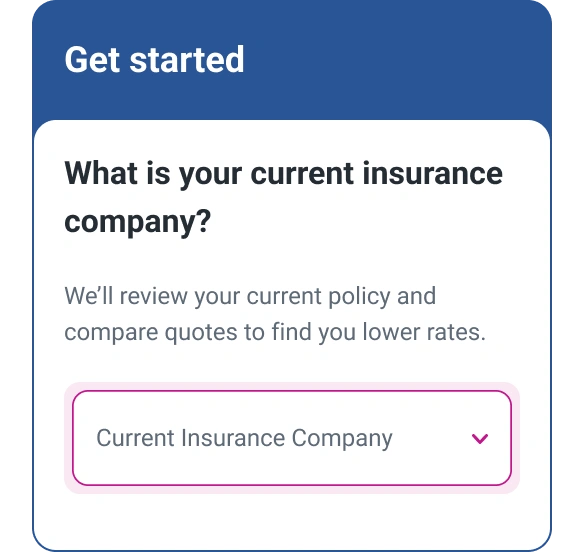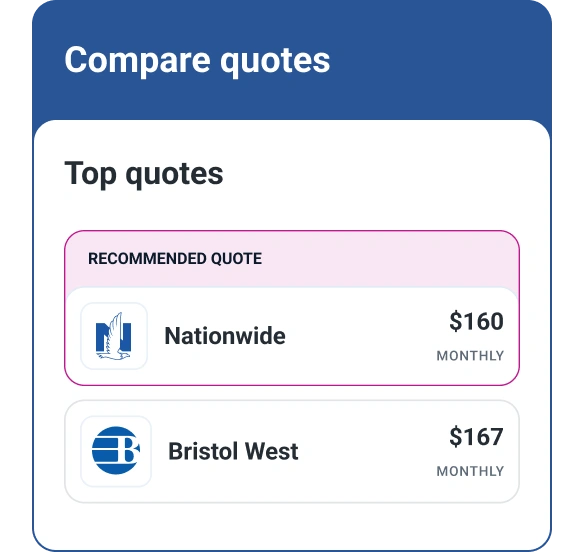Why Is My Car Insurance So High?
Quick Answer
Your car insurance rates could be high due to a variety of factors, including recent claims or changes to your coverage, driving record or location.

The average annual cost of an auto insurance policy is $2,304, or $192 per month, according to Experian data from January 2025. If you're paying more than that, you may be wondering how your car insurance got so expensive. Your car insurance rate can be high for many reasons, including changes to your coverage, your household or your driving record, as well as inflation and other factors beyond your control. Read on for 12 reasons your car insurance premiums might be going up and ways you can lower them.
1. Recent Accident or Claim
Being involved in an auto accident can lead to higher car insurance premiums, even if the accident wasn't your fault. Filing a car insurance claim can also spur a premium increase, particularly if it's a major claim. Overall, the more accidents and claims you have, the riskier you appear to the insurance company.
2. Traffic Violation
Non-moving violations, such as parking tickets, generally don't impact your insurance premiums. However, depending on your existing driving record and the seriousness of the offense, a moving violation can increase your premiums by up to 82%, according to insurance website The Zebra. You'll generally pay a higher rate for about three years after receiving a traffic ticket. Major offenses, such as driving under the influence, can mean paying higher premiums for much longer.
3. Adding a Teen or Young Adult Driver
Because they're inexperienced and typically more reckless behind the wheel than older drivers, drivers under age 25 cost more to insure. Expect your premiums to rise when you add a teen or young adult to your policy. This is especially true for young men, since men are statistically more likely than women to be involved in accidents or drive under the influence.
4. Moving to a New ZIP Code
Your location is a factor in your car insurance costs; depending on where you move, a new address could result in a premium hike. Claims are more common in urban areas, for example, because the chances of accidents, vandalism and auto theft are higher with more people around. Moving to a place with severe weather conditions could expose your car to damage, as could a residence with street parking instead of a garage.
Finally, different states have different requirements for car insurance coverage, so moving to a new state could mean a bigger insurance bill. For example, drivers in states with no-fault insurance laws often pay more for car insurance because insurance companies' costs are higher in these states.
Refer to the table below for a breakdown of average annual auto insurance costs by state, and how they differ from the national average of $2,304.
Annual Auto Insurance Premium by State
| State | Annual Cost | Difference from National Average |
|---|---|---|
| Vermont | $1,103 | -47.9% |
| Maine | $1,211 | -47.4% |
| New Hampshire | $1,278 | -44.5% |
| Idaho | $1,452 | -37.0% |
| South Dakota | $1,661 | -27.9% |
| Iowa | $1,774 | -23.0% |
| Wisconsin | $1,837 | -20.3% |
| North Carolina | $1,899 | -17.6% |
| Oregon | $2,030 | -11.9% |
| Indiana | $2,044 | -11.3% |
| Minnesota | $2,056 | -10.8% |
| Montana | $2,079 | -9.8% |
| Wyoming | $2,079 | -9.8% |
| Alabama | $2,082 | -9.6% |
| West Virginia | $2,118 | -8.1% |
| New Mexico | $2,164 | -6.1% |
| Illinois | $2,166 | -6.0% |
| Oklahoma | $2,186 | -5.1% |
| Mississippi | $2,235 | -3.0% |
| Ohio | $2,246 | -2.5% |
| Utah | $2,253 | -2.2% |
| Tennessee | $2,266 | -1.6% |
| Kansas | $2,277 | -1.2% |
| Missouri | $2,332 | +1.2% |
| Nebraska | $2,361 | +2.5% |
| Arkansas | $2,439 | +5.9% |
| Pennsylvania | $2,481 | +7.7% |
| Arizona | $2,527 | +9.7% |
| Rhode Island | $2,537 | +10.1% |
| Virginia | $2,636 | +14.4% |
| Texas | $2,686 | +16.6% |
| Colorado | $2,780 | +20.7% |
| Delaware | $2,789 | +21.1% |
| Kentucky | $2,793 | +21.2% |
| North Dakota | $2,896 | +25.7% |
| District of Columbia | $2,909 | +26.3% |
| Florida | $2,931 | +27.2% |
| Washington | $3,003 | +30.3% |
| New Jersey | $3,012 | +30.7% |
| Louisiana | $3,080 | +33.7% |
| South Carolina | $3,143 | +36.4% |
| California | $3,215 | +39.5% |
| Nevada | $3,217 | +39.6% |
| Georgia | $3,246 | +40.9% |
| Massachusetts | $3,311 | +43.7% |
| Michigan | $3,340 | +45.0% |
| Connecticut | $3,429 | +48.8% |
| New York | $3,547 | +53.9% |
| Maryland | $4,122 | +78.9% |
Source: Experian data as of January 2025
Note: Excludes Alaska and Hawaii
5. Lapse in Insurance
Failing to pay your insurance premiums could cause your insurer to drop you, leading to a lapse in car insurance coverage. Even if you don't own a car or aren't driving, having a gap in coverage typically leads to higher premiums when you next purchase car insurance. Purchasing non-owner car insurance or maintaining a minimum amount of coverage when you don't plan to drive can help you avoid this risk.
6. Driving More
Putting more miles on your car increases your odds of being involved in an accident. In general, car insurance companies consider driving 15,000 miles or more annually high mileage, while driving 12,000 or less is considered low mileage. A new job with a long commute could push your mileage out of the low-mileage zone or even into the high-mileage range, both of which may cause a premium increase.
7. Buying a New Car
Whether you add another car to your policy or replace an existing car with a new vehicle, be prepared for a rate increase. The cost of insuring your new car depends on factors such as the cost of repairing or replacing it, its safety record and whether it's a model that's frequently stolen. If the vehicle is financed, the lender may require purchasing comprehensive and collision coverage, which adds to your costs.
8. Getting Older
Turning 55 can bring good news in the form of a discount on your car insurance. People ages 55 to 69 tend to drive cautiously and log fewer miles, reducing their risk of accidents. However, your 70th birthday is likely to bring a premium hike, since drivers age 70 and up are statistically more likely to be involved in serious accidents.
9. Getting Divorced
Your insurance premiums may rise after a divorce. Married people are statistically less likely to file auto insurance claims, according to the National Association of Insurance Commissioners. Married people may also be more likely to qualify for price reductions such as discounts for homeownership or bundling home and car insurance.
10. Increasing Your Insurance Coverage
Purchasing more insurance coverage generally increases your premiums. When you choose to bump up coverage amounts or add optional coverage, such as roadside assistance or rental car reimbursement, be prepared to pay more. Several states, including California, North Carolina, Utah and Virginia, have raised their required minimum coverage limits effective January 1, 2025, which will likely mean higher premiums for drivers in these locations.
Learn more: How Much Car Insurance Do I Need?
11. Inflation
The cost of car insurance has soared by record amounts in the past few years as inflation has driven increases in the cost of auto parts, new vehicles and labor. Another factor in the surge in premiums is the number of severe weather events, which has increased dramatically in the last five years, according to the National Centers for Environmental Information. To compensate for the rising cost of claims, insurance companies are raising rates. The cost of car insurance increased by 12.7% from November 2023 to November 2024, according to data from the Bureau of Labor Statistics.
12. Low Credit Score
In most states, insurance companies can use credit-based insurance scores to help determine your car insurance premiums. These scores, which assess how likely you are to file a claim, are determined by using data from your credit report (and possibly other non-credit information). As a result, checking your regular credit score can be a good indicator of your credit-based insurance score. If your score falls on the lower end of the credit scoring range, insurance companies may be likely to charge you more for car insurance.
Learn more:Factors That Affect Insurance Rates
The Cost of Car Insurance Continues to Rise
If you've noticed an increase in your car insurance premiums, you aren't alone. After decreasing during the pandemic, car insurance costs returned to pre-pandemic levels at the beginning of 2022 and have kept rising ever since, according to Bureau of Labor Statistics (BLS) data.
The chart below shows trends in auto insurance premiums from January 2020 to November 2024. In 2023 alone, auto insurance premiums rose by 17.9%. As of November 2024, the average premium has risen by 18.5% year-to-date.
Year-Over-Year Average Car Insurance Premium Change, 2020-2024
Why Did My Car Insurance Premiums Go up for No Reason?
Even if you maintain a spotless driving record and don't change your coverage, factors that have nothing to do with you can cause your car insurance premiums to rise. Despite a decline in claim frequency in recent years, insurance carriers' costs have risen due to:
- Escalating costs of materials and labor for auto repairs
- Technological advances that make vehicles costlier to repair
- More severe accidents, increasing the number of serious injuries and fatalities
- An upswing in lawsuits arising from motor vehicle accidents
- A high percentage of uninsured/underinsured motorists
- Rising frequency of auto insurance fraud
How to Save on Car Insurance
While the cost of car insurance isn't always under your control, there are several steps you can take to save.
- Look for discounts. You might get discounts for paying online, installing anti-theft equipment, belonging to certain organizations or bundling home and auto insurance, for example.
- Drop nonessential coverage. Cutting out extras like rental car coverage, windshield replacement insurance or roadside assistance can lower your premiums. You may even want to drop collision and comprehensive coverage if you have an older, paid-off car.
- Investigate usage-based car insurance. If you drive less than 12,000 or 10,000 miles per year, you may qualify for low-mileage or pay-per-mile car insurance, which can mean significant savings.
- Choose a bigger deductible. Just be sure you can afford to pay the higher deductible if you need to file a claim.
- Clean up your driving record. Avoid getting traffic tickets and see if you can remove traffic citations from your motor vehicle record by completing a driver safety course.
- Shop around. Regularly comparing car insurance quotes from different companies could help you find more affordable coverage. Experian's auto insurance comparison tool gathers quotes from top insurance carriers so you can see how your current coverage stacks up.
Learn more: How to Compare Car Insurance Rates
Better Credit Could Mean Lower Car Insurance Premiums
With car insurance costs on the rise, it's more important than ever to look for ways to save. If your credit score isn't where you'd like, taking steps to improve it could help you pay less for car insurance. Focus on paying your bills on time, bringing late accounts current and reducing credit card debt. Practicing these positive habits can help improve your financial health—and may lower your car insurance premiums too.
Don’t overpay for auto insurance
If you’re looking for ways to cut back on monthly costs, it could be a good idea to see if you can save on your auto insurance.
Find savingsAbout the author
Karen Axelton specializes in writing about business and entrepreneurship. She has created content for companies including American Express, Bank of America, MetLife, Amazon, Cox Media, Intel, Intuit, Microsoft and Xerox.
Read more from Karen

